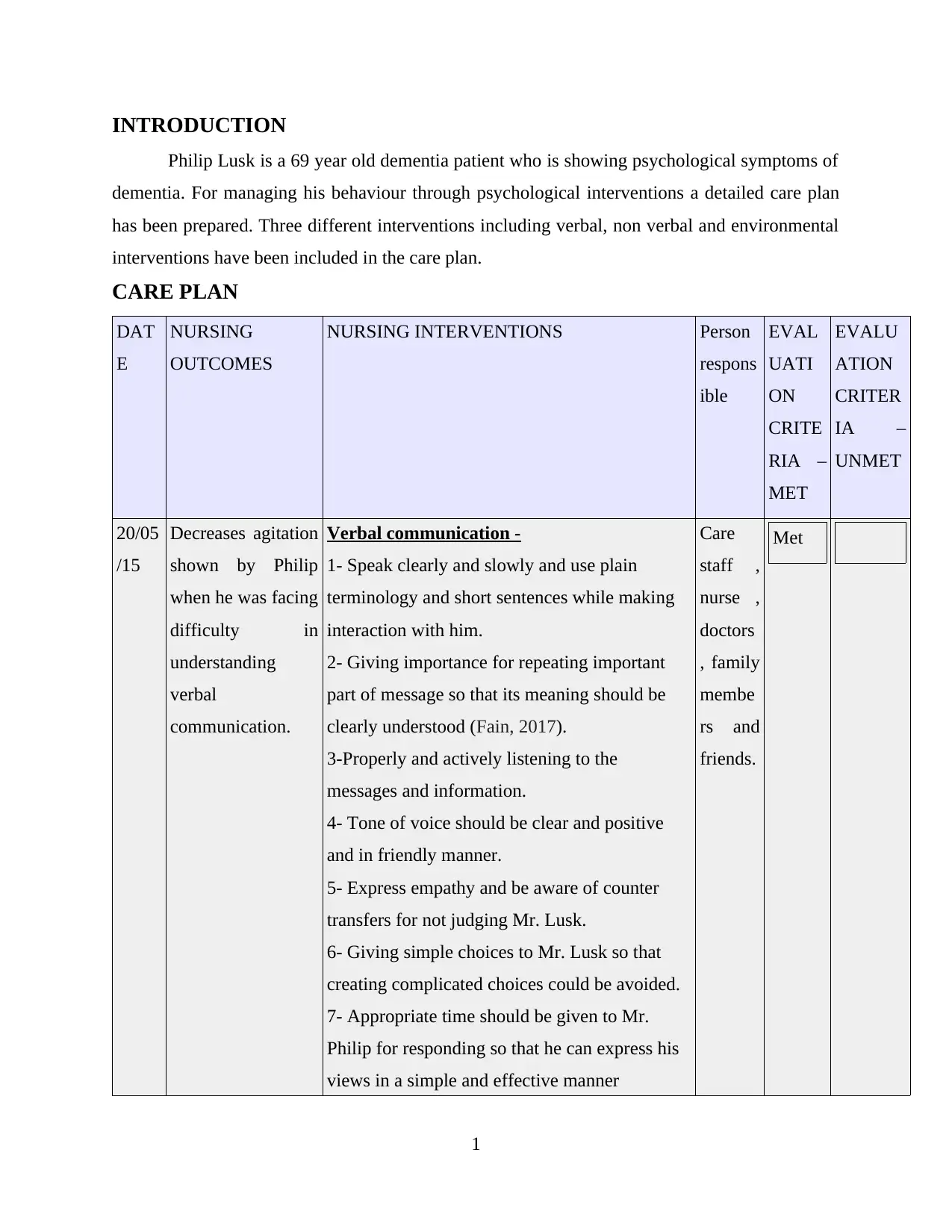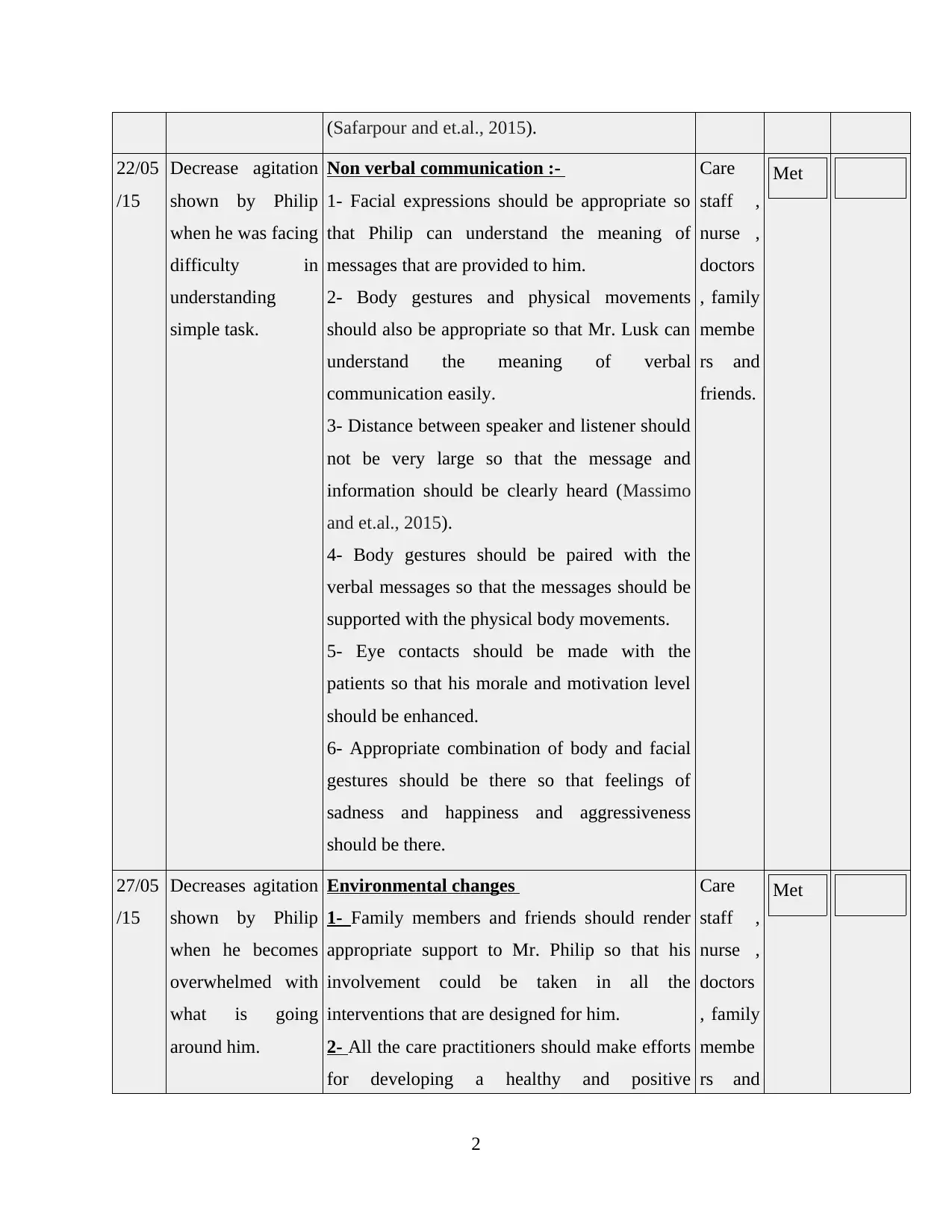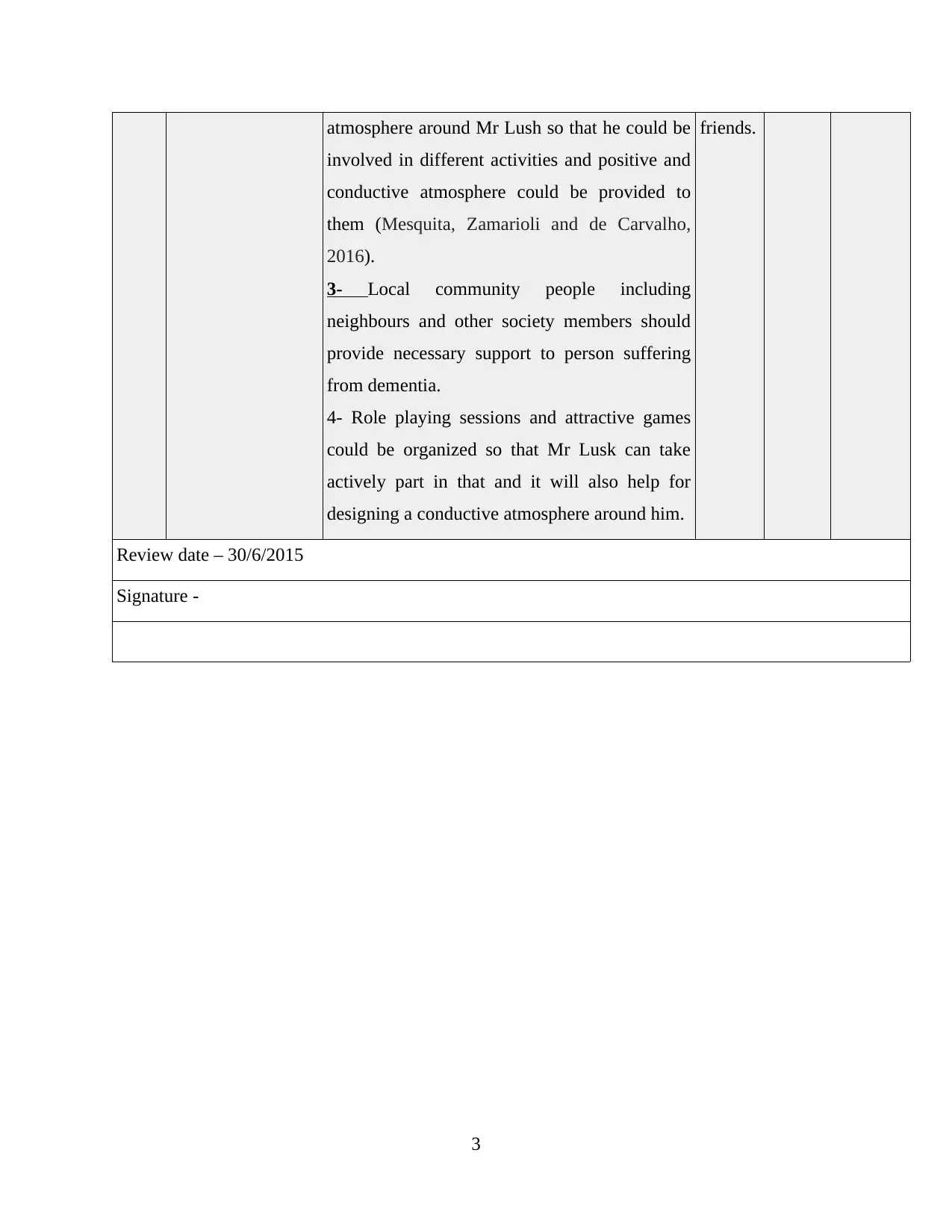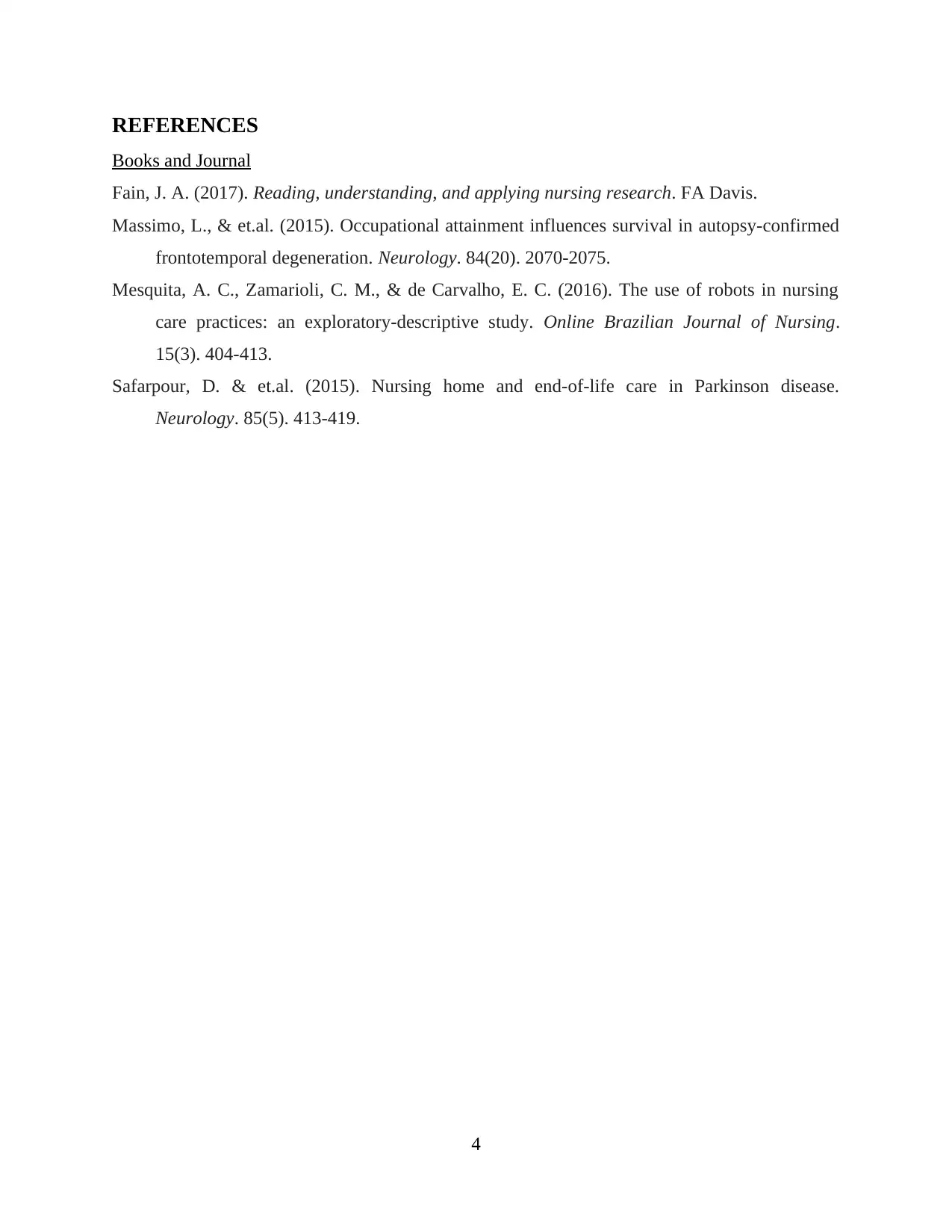Mental Health Care Plan: Patient with Dementia Symptoms
VerifiedAdded on 2020/06/03
|6
|1101
|65
Report
AI Summary
This report presents a detailed care plan for a 69-year-old dementia patient, Philip Lusk, who is exhibiting psychological symptoms. The care plan outlines three key intervention strategies: verbal, non-verbal, and environmental interventions. The verbal interventions focus on clear, simple communication, repetition, active listening, and a positive tone of voice. Non-verbal interventions emphasize appropriate facial expressions, body gestures, and maintaining appropriate physical distance. Environmental interventions involve support from family, friends, and the community to create a positive atmosphere and encourage active participation in activities. The report includes specific dates, nursing outcomes, responsible parties, and evaluation criteria (met/unmet) for each intervention. References to relevant books and journal articles are also provided to support the care plan's approach and recommendations.
1 out of 6













![[object Object]](/_next/static/media/star-bottom.7253800d.svg)